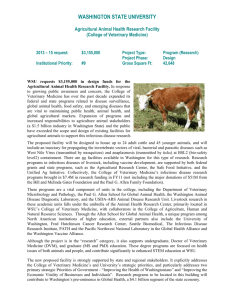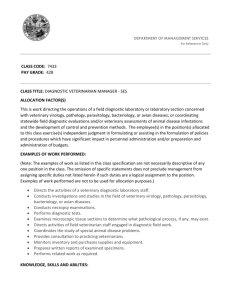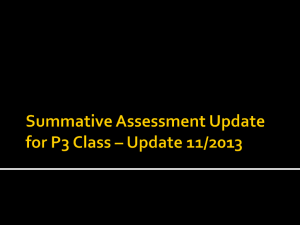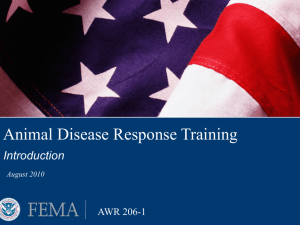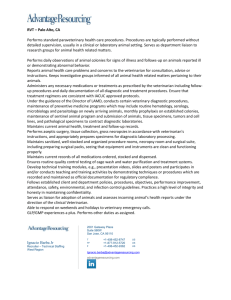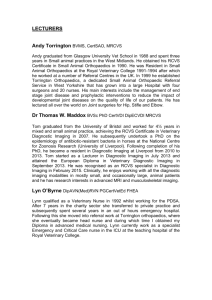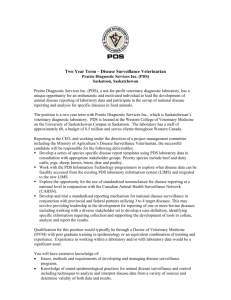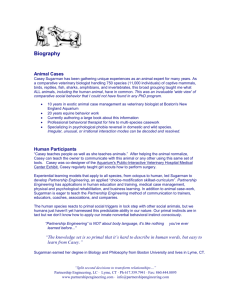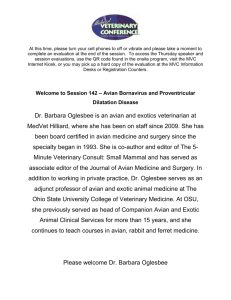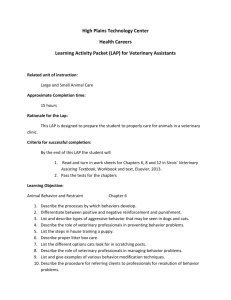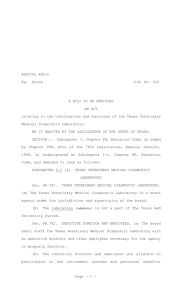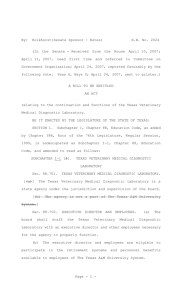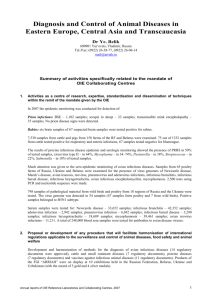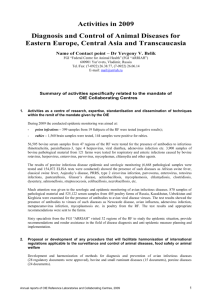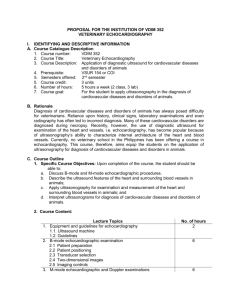Global Animal Health Building, Phase II
advertisement
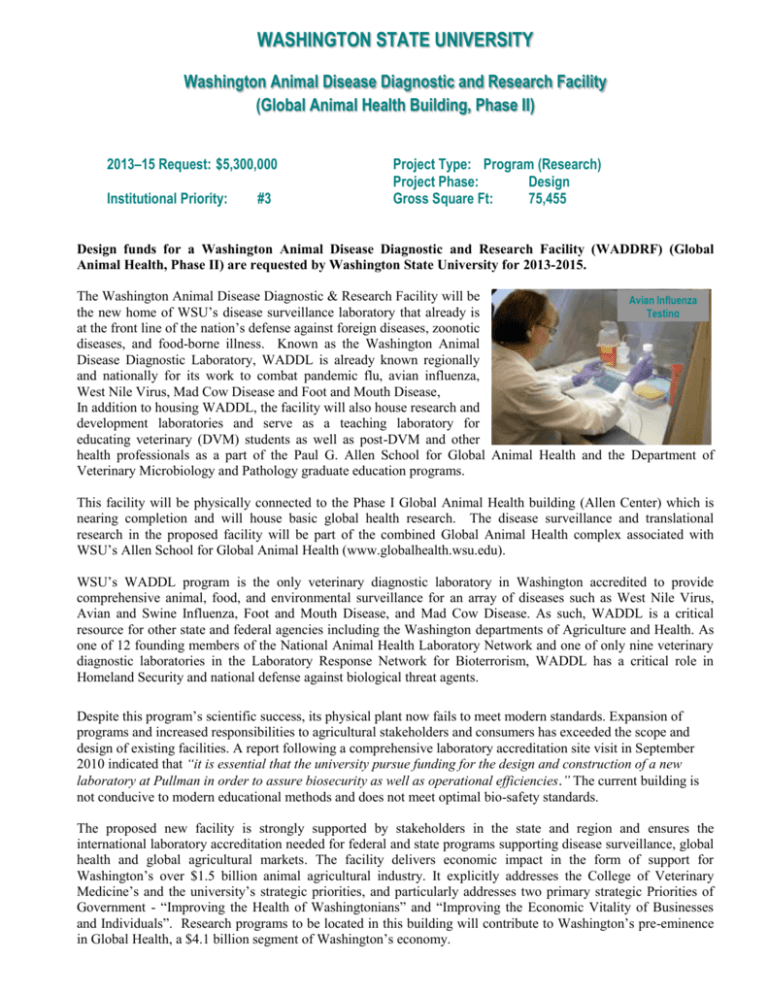
WASHINGTON STATE UNIVERSITY Washington Animal Disease Diagnostic and Research Facility (Global Animal Health Building, Phase II) 2013–15 Request: $5,300,000 Institutional Priority: #3 Project Type: Program (Research) Project Phase: Design Gross Square Ft: 75,455 Design funds for a Washington Animal Disease Diagnostic and Research Facility (WADDRF) (Global Animal Health, Phase II) are requested by Washington State University for 2013-2015. The Washington Animal Disease Diagnostic & Research Facility will be Avian Influenza the new home of WSU’s disease surveillance laboratory that already is Testing at the front line of the nation’s defense against foreign diseases, zoonotic diseases, and food-borne illness. Known as the Washington Animal Disease Diagnostic Laboratory, WADDL is already known regionally and nationally for its work to combat pandemic flu, avian influenza, West Nile Virus, Mad Cow Disease and Foot and Mouth Disease, In addition to housing WADDL, the facility will also house research and development laboratories and serve as a teaching laboratory for educating veterinary (DVM) students as well as post-DVM and other health professionals as a part of the Paul G. Allen School for Global Animal Health and the Department of Veterinary Microbiology and Pathology graduate education programs. This facility will be physically connected to the Phase I Global Animal Health building (Allen Center) which is nearing completion and will house basic global health research. The disease surveillance and translational research in the proposed facility will be part of the combined Global Animal Health complex associated with WSU’s Allen School for Global Animal Health (www.globalhealth.wsu.edu). WSU’s WADDL program is the only veterinary diagnostic laboratory in Washington accredited to provide comprehensive animal, food, and environmental surveillance for an array of diseases such as West Nile Virus, Avian and Swine Influenza, Foot and Mouth Disease, and Mad Cow Disease. As such, WADDL is a critical resource for other state and federal agencies including the Washington departments of Agriculture and Health. As one of 12 founding members of the National Animal Health Laboratory Network and one of only nine veterinary diagnostic laboratories in the Laboratory Response Network for Bioterrorism, WADDL has a critical role in Homeland Security and national defense against biological threat agents. Despite this program’s scientific success, its physical plant now fails to meet modern standards. Expansion of programs and increased responsibilities to agricultural stakeholders and consumers has exceeded the scope and design of existing facilities. A report following a comprehensive laboratory accreditation site visit in September 2010 indicated that “it is essential that the university pursue funding for the design and construction of a new laboratory at Pullman in order to assure biosecurity as well as operational efficiencies.” The current building is not conducive to modern educational methods and does not meet optimal bio-safety standards. The proposed new facility is strongly supported by stakeholders in the state and region and ensures the international laboratory accreditation needed for federal and state programs supporting disease surveillance, global health and global agricultural markets. The facility delivers economic impact in the form of support for Washington’s over $1.5 billion animal agricultural industry. It explicitly addresses the College of Veterinary Medicine’s and the university’s strategic priorities, and particularly addresses two primary strategic Priorities of Government - “Improving the Health of Washingtonians” and “Improving the Economic Vitality of Businesses and Individuals”. Research programs to be located in this building will contribute to Washington’s pre-eminence in Global Health, a $4.1 billion segment of Washington’s economy.
